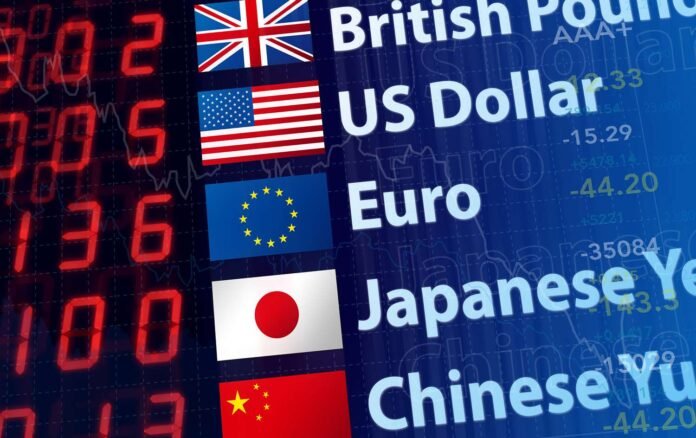Introduction: Advanced Approaches to Forex Markets
The United Arab Emirates has positioned itself as a sophisticated financial center where investors increasingly seek advanced strategies beyond basic currency trading. For UAE residents who have mastered fundamental forex concepts, developing refined trading approaches becomes essential for consistent profitability. The combination of the UAE’s strategic timezone location, excellent connectivity, and zero taxation creates an ideal environment for implementing sophisticated trading methodologies.
According to the Bank for International Settlements, daily forex turnover exceeds six trillion dollars, with the majority occurring during overlapping trading sessions that align perfectly with UAE business hours. This timing advantage allows Emirates-based traders to participate during peak liquidity periods when spreads tighten and price movements become more predictable. However, success requires systematic approaches, psychological discipline, and continuous adaptation to changing market conditions.
Understanding Different Trading Styles
Choosing Your Approach
Different trading styles suit different personalities and schedules. Day trading involves opening and closing positions within the same trading day, requiring constant market monitoring and quick decision-making. This approach suits UAE residents with flexible schedules who can dedicate several hours daily to active trading during European and American sessions.
Swing trading holds positions for several days or weeks, capturing larger price movements while requiring less screen time. This style works well for professionals with demanding careers who cannot monitor charts continuously. Position trading takes an even longer view, holding trades for months based on fundamental analysis and major trend identification.
Scalping represents the most intensive approach, making dozens of trades daily for small profits on each. This requires excellent execution speed, tight spreads, and significant time commitment. Most traders in Dubai and Abu Dhabi find swing trading offers the best balance between time commitment and profit potential, allowing them to maintain their primary careers while building trading income gradually.
Technical Analysis Fundamentals
Multi-timeframe analysis provides comprehensive market perspective by examining currency pairs across different timeframes simultaneously. Professional traders check monthly and weekly charts for major trends, daily charts for intermediate direction, and hourly charts for precise entry timing. This layered approach prevents fighting major trends while attempting short-term trades.
Price action trading focuses on candlestick patterns and support-resistance levels without indicators. Key patterns include pin bars at significant levels, inside bars during consolidations, and engulfing candles signaling momentum shifts. Support and resistance zones represent areas where previous buying or selling occurred in sufficient volume to reverse price direction.
Indicator combinations provide valuable confirmation when used selectively. The RSI shows overbought-oversold conditions, moving averages identify trends, and MACD reveals momentum changes. Combining these tools filters false signals that any single indicator might generate. However, avoid cluttering charts with dozens of indicators – professionals typically use only two or three alongside price action.
Comparing Trading Approaches
| Trading Style | Time Commitment | Typical Hold Time | Daily Trades | Stress Level | Best For |
| Scalping | Very High (6+ hours) | Minutes | 20-100 | Very High | Full-time traders |
| Day Trading | High (4-6 hours) | Hours | 5-20 | High | Active traders |
| Swing Trading | Low (1-2 hours) | Days to weeks | 1-5 weekly | Medium | Part-time traders |
| Position Trading | Very Low (30 mins) | Weeks to months | 1-2 monthly | Low | Busy professionals |
This comparison helps UAE investors select approaches matching their available time and temperament. Those with demanding careers should avoid scalping or day trading despite their appeal, as insufficient attention leads to losses. Swing trading typically suits Emirates residents best, allowing participation without dominating daily schedules.
Risk Management Essentials
Effective risk control separates successful traders from those who eventually lose everything. These principles form non-negotiable foundations that every UAE trader must follow:
- Never risk more than 2% per trade – calculate position size based on your stop-loss distance
- Use stop-loss orders on every position – never enter trades without predetermined exits
- Maintain maximum portfolio exposure of 6% – don’t have more than three positions risking 2% each
- Take partial profits at key levels – secure gains while letting portions run for larger targets
- Keep detailed trading journals – document every trade to identify patterns and improve
Position sizing calculation proves critical but often misunderstood. If your account holds 50,000 AED and you risk 2% per trade, maximum loss should be 1,000 AED. If your stop-loss sits 50 pips away, calculate lot size allowing exactly 1,000 AED loss if stopped. This mathematical precision prevents emotional position sizing leading to overleveraging.
Fundamental Analysis for Currency Traders
Central bank policies drive currency valuations more than any other factor. Interest rate differentials between countries directly affect exchange rates. When the Federal Reserve raises rates while the European Central Bank holds steady, USD typically strengthens against EUR. Understanding each central bank’s mandate and economic conditions helps anticipate policy shifts before markets fully price them.
Economic data releases create regular trading opportunities. Employment reports, inflation figures, GDP numbers, and manufacturing indices provide insights into economic health. Strong data typically strengthens currencies while weak data pressures them. For UAE traders, following the economic calendar becomes essential as major releases trigger significant volatility.
Geopolitical events cause sudden currency movements. Political instability, trade disputes, elections, and international conflicts affect exchange rates substantially. UAE residents often recognize implications of Middle Eastern developments before distant traders, providing an information advantage when regional events impact global risk sentiment and energy-linked currencies.
Practical Implementation for Emirates Traders
Optimal trading hours for UAE timezone: The overlap between European and American sessions (16:00-20:00 UAE time) offers maximum liquidity and volatility. Major pairs like EUR/USD experience tightest spreads during this window. Asian session (02:00-10:00 UAE time) suits range-bound strategies since volatility remains subdued except during Australian or Japanese data releases.
Currency pair selection: Major pairs like EUR/USD, GBP/USD, and USD/JPY offer tightest spreads and most predictable behavior. Cross pairs like EUR/GBP provide opportunities during specific economic divergences. Exotic pairs involving emerging markets offer higher returns but with wider spreads and less reliable patterns unsuitable for beginners.
For investors seeking comprehensive market access and educational resources, platforms like fbs-ar.com/ar provide tools for tracking economic calendars alongside real-time charts and analysis. These integrated platforms help UAE traders make informed decisions by combining technical analysis capabilities with fundamental news feeds and risk management calculators.
Common Mistakes to Avoid
Overcomplicating Analysis
Beginners often add dozens of indicators believing more information improves decisions. Reality proves opposite – excessive indicators create conflicting signals causing hesitation. Professional traders use only two or three indicators alongside price action, having tested and understood them thoroughly. Master simple approaches completely before adding complexity.
Ignoring Market Regimes
Trading the same strategy regardless of conditions guarantees failure. Trending markets require momentum-following approaches while ranging markets demand mean-reversion strategies. Spend time before each session assessing whether major pairs trend or range, then select strategies matching those conditions.
Poor Trade Management
Many traders focus exclusively on entries while neglecting trade management. Where you enter matters less than how you manage positions afterward. Moving stops to breakeven too quickly, failing to take partial profits, and letting winners turn into losers by not having exit plans all undermine potentially profitable strategies.
Building Sustainable Success
Consistent profitability requires treating trading as serious business rather than gambling. Develop a comprehensive written plan documenting your strategy, risk parameters, and rules for various market conditions. This plan prevents emotional decisions during stressful moments when discipline wavers.
Maintain detailed records of every trade including entry reasoning, exit reasoning, and lessons learned. This journal reveals patterns in both successful and unsuccessful trades. Most traders repeat mistakes because they lack systematic feedback forcing conscious examination of decisions.
Continuous education remains essential throughout your career. Markets evolve constantly, and previously effective strategies may lose edge. Dedicate weekly time to studying price action, reading professional analysis, and reviewing your performance metrics. Consider specializing in specific pairs or setups rather than attempting to trade everything.
Conclusion: Your Path Forward
Forex trading offers UAE residents exceptional opportunities combining favorable regulations, zero taxation, and optimal timezone positioning. However, these advantages mean nothing without proper education, disciplined execution, and patient skill development. The path to consistent profitability requires dedication exceeding what most anticipate.
Start with comprehensive education covering technical analysis, fundamental drivers, and risk management. Progress through extended demo trading where mistakes teach without financial cost. When transitioning to live trading, begin with minimal position sizes focusing on process rather than profits. As competence develops, returns can increase proportionally.
Remember that professional traders spent years developing skills through thousands of trades. Approach forex as a marathon requiring sustained effort, not a sprint promising quick wealth. Markets reward patience and discipline while punishing impatience and emotional decisions.









